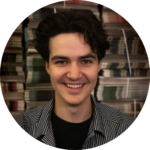Lecture Me! On a new structure for science pedagogy
Professor Sheliza Ibrahim’s research on critical pedagogy and place-based education explores new frameworks of learning.
Dr. Sheliza Ibrahim’s journey in education began at the University of Toronto Mississauga (UTM), where she earned an Honours Bachelor’s of Science in biology and anthropology. She continued her education at Queen’s University Belfast, where she earned a master’s in science communication, and finally a PhD from York University in science education. Now an Assistant Professor within UTM’s Institute for the Study of University Pedagogy, Dr. Ibrahim seeks to incorporate critical pedagogy and place-based education—which encourages students to think intentionally about their local surroundings—both in her research and her teachings.
Courses she has taught on university pedagogy try to reimagine collective understanding through an activity she calls “critical visualization.” The intent of the activity is to complicate students’ individual understanding of a given image. Dr. Ibrahim will present her students with visualizations that seem to portray a single entity but actually contain a myriad of nuanced dimensions that she reveals through close examination and collective discussion. These exercises demonstrate the complicated state of individual understanding and help to situate student’s ideas and opinions within a larger collective understanding. Currently, she is teaching ISP130: Numeracy for University and Beyond.
In her course on university pedagogy at the University of Toronto Mississauga (UTM), Dr. Sheliza Ibrahim tries to reimagine collective understanding through an activity she calls “critical visualization.” The intent of the activity is to complicate students’ individual understandings of a given image. Dr. Ibrahim presents her students with visualizations that seem to portray a single entity but actually contain a myriad of nuanced dimensions that she reveals through close examination and collective discussion. These exercises demonstrate the complicated state of individual understanding and help situate students’ ideas and opinions within a larger collective understanding.
Just as an image can resemble different things from different points of view, so too can principles in math and science differ depending on the learner’s disposition. The only difference is that these variances are not limited to spatial dimensions but extend to economic, social, historical, environmental, and political differences. “The premise is to invite young scholars to connect to the language from their own frameworks of knowing,” Dr. Ibrahim adds. “They can expand their thinking past [any] dominant assumptions.”
Her intent is to alert students about the complex nuances and inherent subjectivity in established modes of thinking, as well as awaken a critical perspective on their own disposition. “This is really a steppingstone for us to get critically thinking about the complex reality of things that exist around us,” Dr. Ibrahim shares. “The more important task is looking into images of our environment and our own communities.” This exercise of intellectual interrogation is part of an ongoing research interest of Dr. Ibrahim’s, which investigates critical pedagogy and place-based education to develop modes of teaching that accommodate “where [students] live, how they live, what they believe in, [and] who they are surrounded by.”
However, Dr. Ibrahim acknowledges the complexities associated with these pedagogical methods. “It’s very easy to assume or fall into the assumption that the way education is traditionally taught is the only way or the best,” she says. “But as we start to re-envision or imagine education tools and pedagogical options we start to consider, ‘Well, what could learning look like?’” Dr. Ibrahim adds that within these revisions, it is critical to recognize that we are preparing students for futures that we know very little about. Our current modes of teaching are either present-oriented or grounded in assumptions about what the future will look like; these dominant assumptions about traditional systems of knowledge can become so ingrained within popular discourse that they become almost invisible.
This relative, multidimensional approach to education might be familiar to students of the humanities or social sciences. Dr. Ibrahim’s practices are unique because they are determined to pronounce these educational structures in the sciences. “All scientific concepts need to be understood through their political, economic, social, environmental, and historical dimensions in order to truly understand why the science exists the way it does,” explains Dr. Ibrahim. “There are multiple ways of solving one math equation.” She admits that this could be seen as quite radical in learning spaces like science and math, which traditionally uphold a deliver-and-receive approach. However, Dr. Ibrahim believes that science educators should not only design teaching approaches to satisfy the curriculum and the institutions, but also the learner along with their numerous individualities.
In her research, Dr. Ibrahim relies on the theoretical discourse surrounding critical pedagogy and place-based education. By combining these two research areas, she develops a critical pedagogy of place which promotes psychological thinking and critical social analysis. “Reflecting on one’s own situation corresponds to reflecting on the place one inhabits, [and] acting on one’s situation often corresponds to challenging one’s own relationship to place,” explains Ibrahim. “It is this spatial dimension of situationality and its attention to social transformation that connects critical pedagogy with a pedagogy of place.” Ibrahim is determined to develop teaching practices that question established assumptions in science and math, particularly ones that are predominantly understood through Western thought.
“My research is really grounded in education,” Dr. Ibrahim shares. “I grew up on the notion that education is an important asset for social mobility. My parents studied under British education systems that often governed the West Indies, so I’m also trying to think about what education meant to them in a colonized space and what education means to me as I seek purpose and enlightenment in my own personal journey.”
How do the places that we inhabit influence our education? How do the places we learn in influence our beliefs? These questions are what drive Dr. Ibrahim’s research into critical pedagogy and place-based education. “I want my students to understand that a diversity of voices is needed to solve many of our problems in the world so that my students feel empowered to bring their whole identities to the conversations, ideas, and problems that they are contemplating in this academic space,” she concludes.
Copy Editor (Volume 49) | aidan@themedium.ca —Aidan is completing a major in Professional Writing and Communications at the University of Toronto Mississauga. He previously worked as the Associate Editor for the Arts and Entertainment section of The Medium, and currently works as the Copy Editor for The Medium. When he’s not catching up on course work or thumbing through style guides, Aidan spends his free time exercising (begrudgingly), singing (unmelodically), and trying (helplessly) to read David Foster Wallace’s Infinite Jest. The latter of which has taken 3 years to reach the 16th page. You can connect with Aidan at aidan@themedium.ca.


